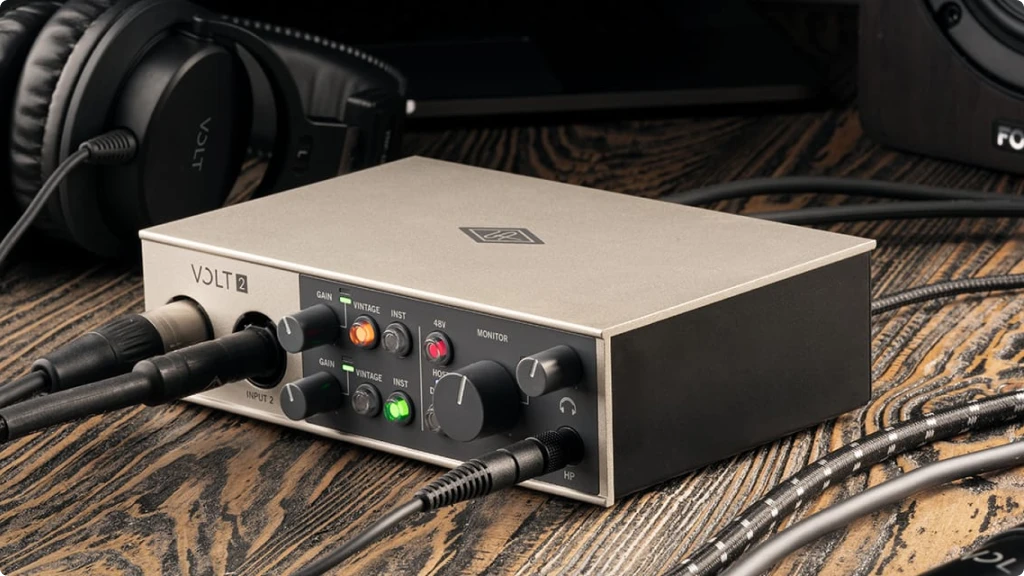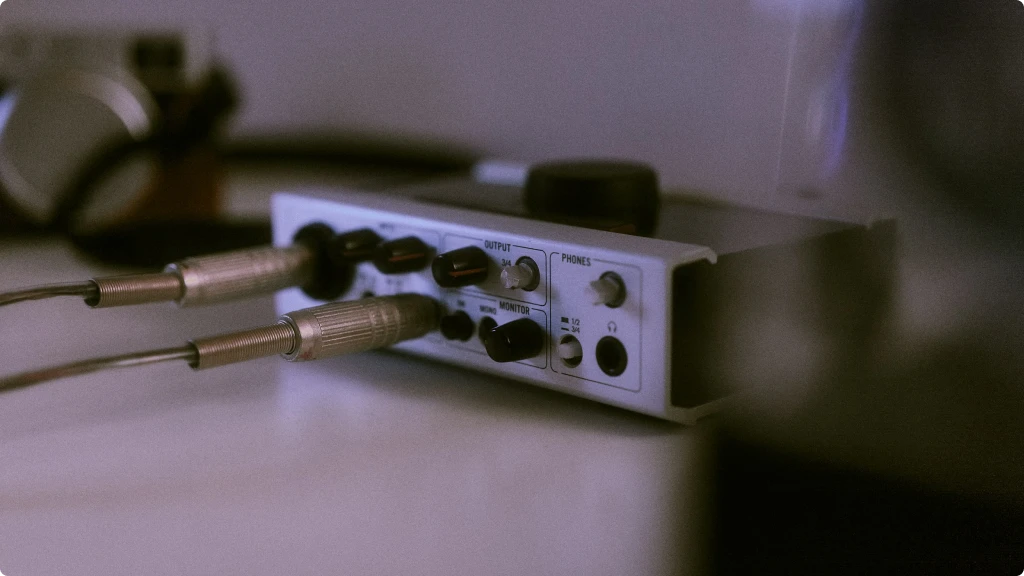AI audio interfaces bring professional studio features to home producers. Explore real-time latency monitoring, spectral analysis, automated mixing, and the latest AI technology changing music production forever.
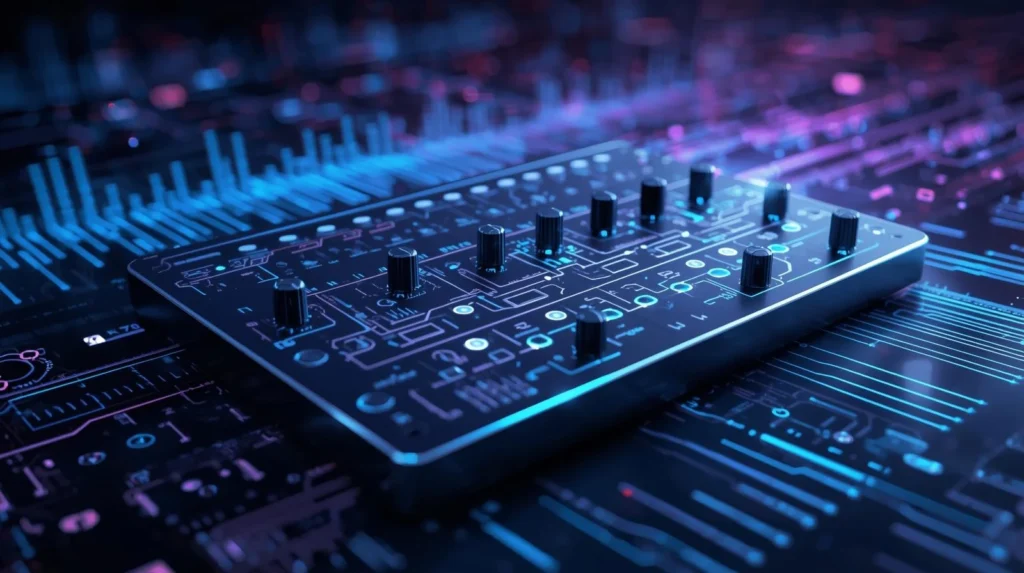
The music production landscape has undergone a dramatic transformation over the past few years. What was once the exclusive domain of high-end recording studios is now accessible to bedroom producers and musicians worldwide. But as technology becomes more democratized, the expectations for quality and efficiency continue to rise. Today’s music producers aren’t just looking for interfaces that capture sound—they’re seeking intelligent tools that enhance their workflow, reduce learning curves, and unlock creative possibilities previously reserved for Grammy-winning studios.
This shift represents a fundamental change in how we approach music production. Artificial intelligence and smart automation are no longer futuristic concepts relegated to science fiction. They’re actively reshaping the audio interface market, introducing capabilities that adapt to user behavior, optimize audio in real-time, and streamline the production process like never before.
Understanding AI-Powered Audio Interfaces
An AI-powered audio interface extends beyond the traditional definition of audio equipment. While conventional interfaces serve as the bridge between your instruments, microphones, and computer, intelligent audio interfaces incorporate machine learning algorithms that learn your preferences, analyze incoming signals, and make autonomous adjustments to enhance audio quality and workflow efficiency.
These devices represent a convergence of three technological domains: hardware engineering, digital signal processing, and machine learning. When these elements work in harmony, they create environments where technical expertise becomes less important than creative vision. A producer who once needed years of experience to understand gain staging, impedance matching, and signal routing can now rely on AI assistance to handle these technical considerations while focusing on the artistic aspects of music creation.
The practical implications are substantial. An AI-powered interface might automatically detect whether you’re recording vocals, electric guitar, or acoustic instruments, then adjust input levels and suggested signal routing accordingly. It could analyze your recording habits and recommend optimal settings based on patterns it’s learned from your previous sessions. Some advanced models even incorporate real-time spectral analysis to warn you about potential frequency conflicts or clipping before they occur.
Smart Features Transforming Music Production
Intelligent Gain Staging and Auto-Level Detection
One of the most common challenges for emerging producers is setting appropriate input levels. Too low, and your recording lacks definition and appears noisy. Too high, and you risk digital clipping that destroys audio quality irreversibly. This seemingly simple task causes frustration for countless musicians beginning their production journey.
Smart audio interfaces address this challenge through auto-level detection systems powered by machine learning. These algorithms analyze incoming audio signals in real-time and recommend optimal gain settings before recording begins. More importantly, they learn from your previous recording sessions. If you consistently record vocals at a certain microphone distance and volume, the system remembers this pattern and suggests appropriate levels automatically when you connect the same microphone.
Some advanced models go further, implementing dynamic gain adjustment that responds to variations within a single recording session. If your vocals naturally vary in intensity throughout a song, the interface can make subtle adjustments that prevent clipping during louder phrases while maintaining consistent signal integrity throughout.
A new AI prototype called Target Speech Hearing enables users to focus on a chosen individual’s voice by “enrolling” them, allowing that voice to stay audible even while other sounds are effectively muted.
Real-Time Latency Monitoring and Adaptive Buffering
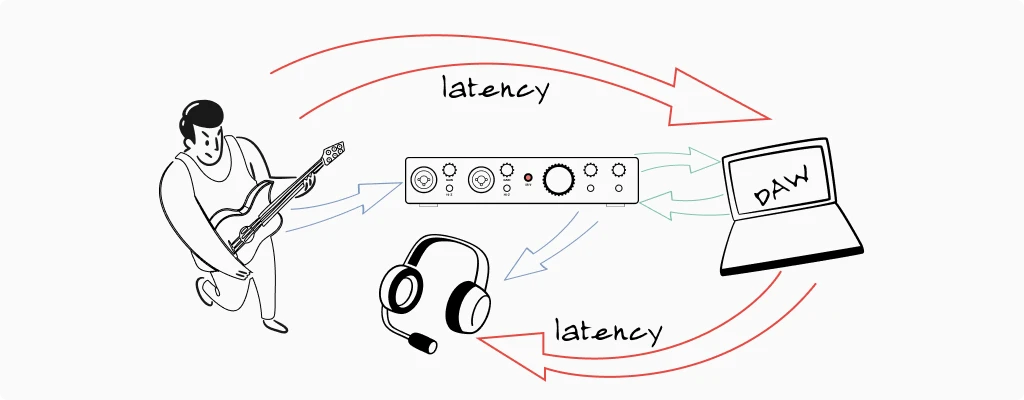
Latency—the delay between when you play a note and when you hear it—represents one of the most frustrating aspects of digital music production. For performers accustomed to the immediate response of acoustic instruments, even minimal latency can feel jarring and unnatural, disrupting the flow of a performance.
Modern AI-powered interfaces tackle this through adaptive buffering systems that dynamically adjust buffer sizes based on your computer’s processing load. Rather than requiring manual adjustment of buffer sizes through your DAW settings, the interface continuously monitors system performance and automatically optimizes settings to maintain the lowest possible latency without introducing audio dropouts or digital artifacts.
These systems typically measure latency constantly and display it in real-time through companion applications. This transparency allows producers to understand exactly what they’re working with and make informed decisions about whether they need additional optimization. Some interfaces can achieve roundtrip latencies below 10 milliseconds—the threshold research indicates is imperceptible to most musicians—even on computers running complex plugin-heavy sessions.
Adaptive Impedance Matching and Signal Optimization
Every microphone, instrument, and audio device has impedance characteristics that affect how it transmits signal. Professional studios employ impedance-matching transformers and preamps designed specifically to optimize signal transfer from various sources. This level of customization typically costs thousands of dollars and requires deep technical knowledge.
AI-powered interfaces democratize this technology through automatic impedance detection and optimization algorithms. When you connect a microphone, instrument, or line-level source, sensors detect the impedance characteristics and the interface automatically adjusts its input stage parameters to achieve optimal signal transfer. This intelligent adaptation occurs transparently, without requiring user intervention.
The result is more consistent, cleaner audio across multiple input sources. A microphone that sounds thin on one interface might sound rich and full when connected through an AI-powered interface with proper impedance optimization. Similarly, connecting an electric guitar with varying impedance based on cable quality, pickup type, and effects pedal chain is automatically accounted for, ensuring consistent performance regardless of your specific gear configuration.
Spectral Analysis and Real-Time Feedback
Many modern producers work in less-than-ideal acoustic environments. Bedrooms, closets, and home studios often lack proper treatment, resulting in reflections, standing waves, and room resonances that color recordings with unwanted characteristics. While acoustic treatment is always the ideal solution, many producers need to work with their current environment.
Advanced AI audio interfaces include real-time spectral analysis that monitors frequency content of incoming signals. This technology can identify problematic resonances, frequency buildups, or spectral imbalances and provide recommendations for correction through EQ or other processing. Some systems take this further by integrating with your DAW to suggest plugin applications or parameter settings that might address identified issues.
During recording sessions, visual representations of spectral content help identify problems before they become embedded in your recordings. Rather than discovering during mixing that you’ve recorded a vocal with excessive proximity effect or low-frequency rumble, you catch and address these issues during the performance itself.
AI-Assisted Mixing and Processing Recommendations
The boundary between recording and mixing becomes increasingly blurred with AI assistance. Some intelligent audio interfaces now incorporate machine learning models trained on professional production techniques. These systems analyze what you’ve recorded and suggest appropriate mixing approaches based on the content.
Record a vocal? The system might recommend specific compression ratios, EQ starting points, and reverb suggestions based on the vocal characteristics it detected. Record a drum kit? It could suggest compression settings that are statistically associated with professional-sounding drum recordings. These aren’t rigid, one-size-fits-all presets but rather starting points informed by analysis of your specific recording and patterns from thousands of professional productions.
This approach dramatically reduces the learning curve for emerging producers while respecting the expertise of professionals who can accept or reject suggestions as needed. It’s a collaborative relationship between human creativity and machine intelligence.
Workflow Optimization Through Machine Learning
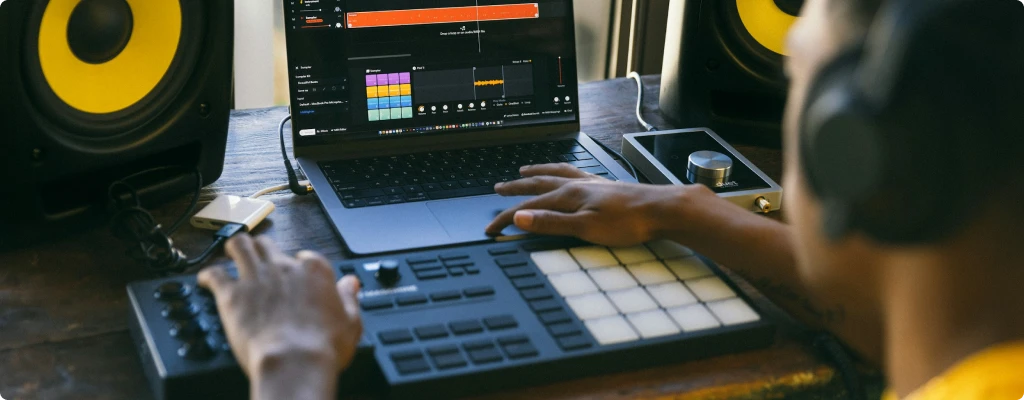
Beyond individual audio features, AI-powered interfaces optimize your entire production workflow through pattern recognition and predictive assistance. Machine learning algorithms track how you typically work—which instruments you record, how you structure sessions, what plugins you reach for repeatedly, and how long certain tasks typically take.
This learned behavior enables predictive assistance. When you boot up your interface, it might automatically prepare your DAW with optimal settings based on the project type it predicts you’re starting. If your interface recognizes that you’re setting up for a vocal recording session, it could pre-populate your selected input, enable monitoring, recall your preferred vocal compression settings, and open relevant plugin windows.
Some interfaces learn about your mixing preferences and apply subtle enhancement automatically during recording. If analysis indicates you consistently apply certain EQ or compression characteristics to particular instrument types, an AI interface might offer these as real-time suggestions or even apply them subtly during capture, allowing you to disable them during mixing if desired.
The cumulative effect of these optimizations is significant time savings and reduced friction in your creative process. What previously required five clicks and menu navigation now happens automatically, leaving your brain free to focus on performances and creative decisions rather than technical configuration.
The Latest Developments in 2025
The AI audio interface market continues accelerating through 2025. Recent innovations indicate several emerging trends reshaping the landscape.
Cloud-based processing integration represents one significant development. Advanced interfaces now connect with cloud services to offload computationally intensive AI tasks. Your interface captures audio and streams a portion to cloud servers where sophisticated AI models analyze the content with far greater processing power than local hardware allows. Results return instantly to your interface, enabling real-time feedback that would be impossible with purely local processing.
Cross-device AI learning creates another frontier. Some newer interfaces begin incorporating federated learning architectures where data from multiple devices informs model improvement without transmitting sensitive recording data to external servers. This allows the collective experience of thousands of producers to enhance your personal AI assistant while maintaining privacy.
Integration with MIDI controllers has deepened, with AI systems now learning correlations between your MIDI input patterns and audio characteristics you prefer. If the system recognizes that certain drum machine patterns historically lead you toward particular mixing approaches, it starts suggesting compatible settings automatically.
Voice command functionality has reached practical maturity in premium models. Verbal instructions like “record vocals with low compression” or “increase interface gain by 3 dB” now work with acceptable accuracy, enabling hands-free operation during performances when physical interface access isn’t practical.
Evaluating AI Features When Choosing an Audio Interface
As AI capabilities proliferate across audio interface manufacturers, consumers face choices about which features matter most for their specific needs. Consider several factors when evaluating AI-powered options.
First, assess whether the interface targets your specific use case. A vocal-focused interface with AI tailored for microphone recording might include irrelevant features for someone primarily recording guitar and bass. Dedicated interfaces often provide better optimization within their specialty than generalist models trying to serve all purposes equally.
Second, consider the learning curve for AI features themselves. Some interfaces require extensive configuration and training to develop useful learning models. Others operate effectively with minimal setup. If you prefer straightforward operation, interfaces that deliver AI benefits passively without requiring your active participation might appeal more than systems demanding careful feeding of training data.
Third, examine whether AI features require ongoing cloud connectivity. Some interface models rely on internet connection for full AI functionality. For those working offline or in locations with unreliable connectivity, locally-focused AI systems are preferable. Others keep the most essential functions local while optional cloud features enhance capabilities when connectivity is available.
Fourth, investigate the transparency of how AI makes decisions. Leading interfaces provide clear visibility into what the AI recommends and why, respecting your artistic agency. Less transparent systems making decisions without explanation can feel frustrating and reduce creative control.
Finally, consider compatibility with your existing workflow. An AI audio interface that integrates seamlessly with your preferred DAW, plugins, and hardware is vastly more valuable than one requiring workarounds and adaptation. Research whether the interface’s AI features work within your existing setup or demand significant workflow changes.
Setting Up AI Features for Maximum Benefit
While many AI capabilities operate automatically, intentional setup maximizes their benefits. Begin by recording varied content in your typical working environment. AI learning algorithms need examples to establish patterns. Record vocals, instruments, different dynamics, and varied content types. This diversity teaches the system to recognize context and adapt appropriately across varied scenarios.
Regularly review AI recommendations and feedback, even when the automatic suggestions are working well. Deliberately accepting or rejecting suggestions—rather than passively ignoring them—trains the AI model about your preferences. You’re not just using AI; you’re collaboratively establishing understanding with it about your creative priorities.
Take advantage of feedback mechanisms for indicating when AI recommendations missed the mark. Interfaces with learning features often include thumbs-up/thumbs-down capabilities or explicit rejection options. Using these tools directly trains the algorithm toward your preferences.
Periodically reset learning models if you notice them providing irrelevant suggestions. Sometimes interfaces accumulate outdated patterns from previous workflows no longer representative of your current approach. Clearing this accumulated learning and starting fresh can refresh recommendation quality.
The Future of Audio Interfaces: Where AI Leads
The trajectory of AI in audio interfaces points toward several exciting developments on the horizon. Multimodal AI that integrates audio analysis with visual video input from performers will soon enable interfaces to suggest microphone positioning adjustments based on observed vocal performance characteristics. Recognition of performance intensity from body language could optimize recording parameters automatically during live sessions.
Cross-project learning will eventually allow your AI interface to recognize that you’re working in a similar genre to previous projects, instantly recalling not just technical settings but entire production approaches that worked well in related contexts. Your interface becomes a collaborator remembering your past successes and offering to repeat them.
Neural network models trained on your personal production history could eventually enable truly personalized audio interface behavior. Rather than generic AI trained on broad producer populations, your interface develops intimate understanding of your specific creative preferences and technical priorities.
Hardware advancement will push more sophisticated AI processing onto local devices, reducing cloud dependency and enabling powerful AI assistance even offline. As onboard processing capabilities expand, interfaces can perform more complex analysis locally, reducing latency and privacy concerns while maintaining the benefits of intelligent audio optimization.
Conclusion
AI-powered audio interfaces represent more than incremental hardware improvements. They embody a fundamental shift in how we approach music production, making professional-grade capabilities accessible to anyone passionate about music creation. By automating technical decisions, providing intelligent feedback, and learning from your individual workflow patterns, these interfaces elevate the creative potential of producers at every skill level.
The convergence of AI technology with audio equipment democratizes production expertise that previously took years to develop. Whether you’re recording your first home demo or managing complex multitrack sessions, AI-powered interfaces adapt to support your specific needs and learning stage.
As the technology continues evolving through 2025 and beyond, the distinction between “basic” and “professional” interfaces will increasingly reflect not just hardware specifications but the sophistication of embedded AI assistance. For modern producers, this represents an extraordinary opportunity: the chance to focus entirely on creativity while intelligent technology handles technical complexity. The future of music production isn’t about working harder. It’s about working smarter—with interfaces that help you create at your best.
FAQ
How Much Latency Improvement Will I Get?
Typical improvement: Standard interfaces = 20-30ms latency. AI interfaces = 8-15ms (often imperceptible difference).
You’ll notice it if: You’re currently struggling with delay during performances.
You won’t notice it if: You’re already comfortable with your current latency.
Bottom line: If latency bothers you now, AI helps. If it doesn’t, you won’t see dramatic improvement.
Do AI Features Work Offline?
Short answer: Yes. Core AI features (gain staging, impedance matching, real-time feedback) work offline.
Cloud features: Some advanced recommendations may require internet, but they’re optional.
Bottom line: You can use AI audio interfaces without internet connection for daily production work.

Bassist, guitarist and producer with a long history in bands, I’ve spent more than 20 years immersed in music and gear. When I’m not playing, I’m writing about audio music, studio setups, recording and everything that helps musicians sound their best.

